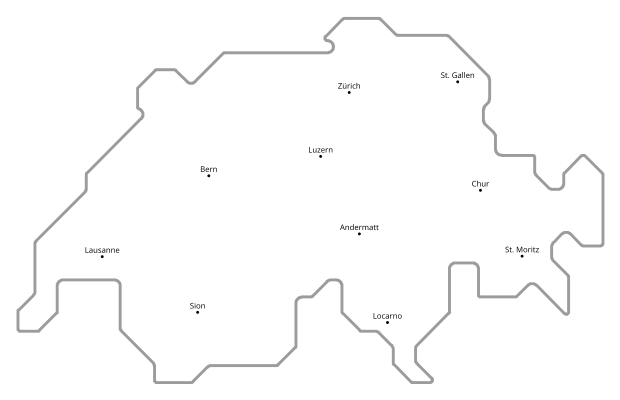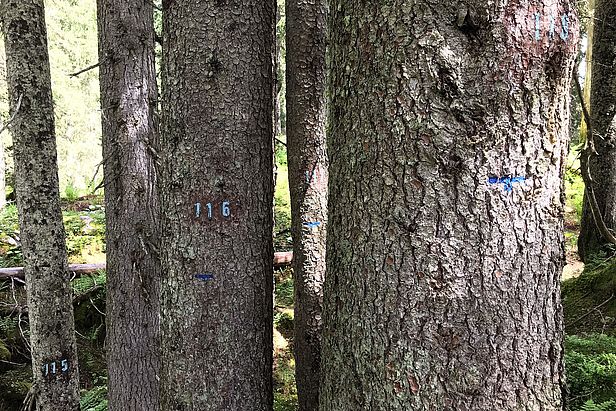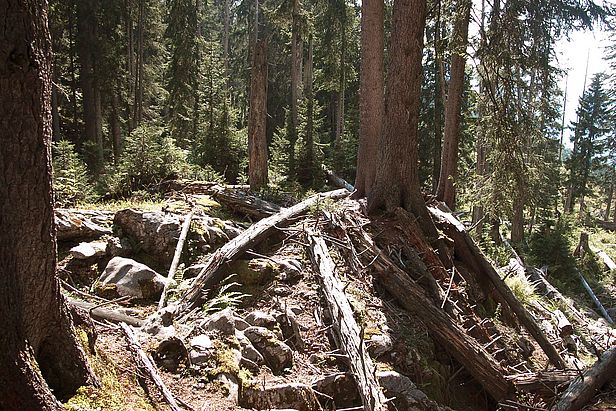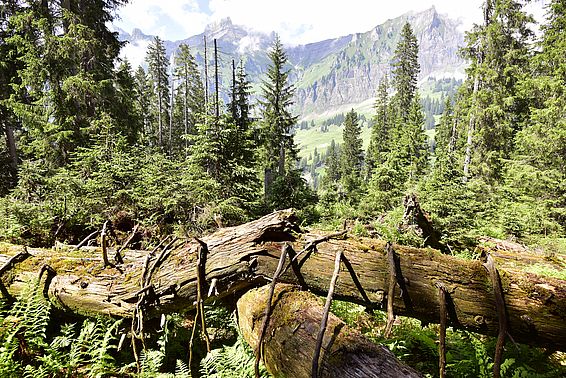05.07.2021 | Reinhard Lässig | News WSL
High-altitude, unmanaged coniferous forests in cold, snowy climates may change slowly, but over a long period the changes are significant. In the Bödmerenwald forest in the canton of Schwyz, the amount of wood in living trees rose by 50% in a period of 44 years, according to the results of the latest forest inventory by the Swiss Federal Institute for Forest, Snow and Landscape Research (WSL). The amount of dead wood, which is important for biodiversity, also increased.
The Bödmerenwald is one of 50 forest reserves in Switzerland where the development from production forest to primeval forest is being investigated using scientific methods. In 1971, five hectares of the forest were given protected status, and timber harvesting was discontinued. Following several expansions, the protected area now covers 463 hectares, equivalent to more than 500 football pitches. The Bödmerenwald is owned by the cooperative Oberallmeindkorporation Schwyz.
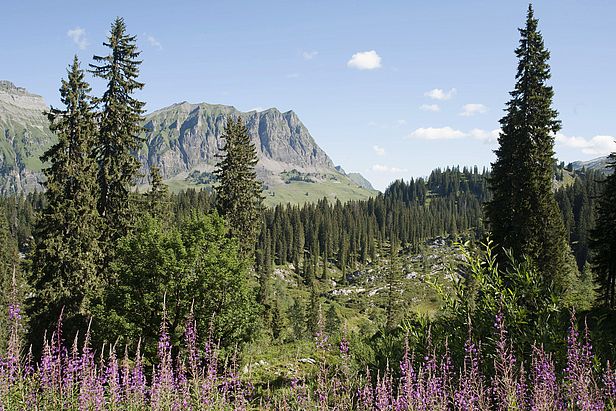
Wood volume up 50%
In the 44 years since the previous inventory in 1974, the average volume of wood increased by half, from 187 to 280 cubic metres per hectare. Even Storm Vivian in 1990, which brought down many trees in the Bödmerenwald, as elsewhere, did not disrupt the upward trend. This trend is mainly due to the discontinuation of forest management, allowing the trees to grow undisturbed. However, in the cold, wet and snowy climate of this mountain forest, it takes decades for this to manifest itself in a larger wood volume.
On the other hand, climate change is likely to promote growth slightly because higher temperatures extend the annual growing season. The number of living trees with a trunk diameter of more than 7 cm has remained unchanged since 1974, meaning that new saplings have offset the number of trees that have died. More and more trees – currently around 3.5 per hectare – have become giants, with impressive trunk diameters of 80 cm and more. Over 85% of the trees are spruce, around 7% mountain pine, 4% birch and 1.5% silver fir, a natural tree species composition typical for this cold climate.
More dead wood – a valuable basis for greater biodiversity
Dead wood is an important substrate for biodiversity. This forest reserve contains 52 m3 of dead wood per hectare, with lying trunks accounting for three quarters of this, and heavily rotted wood making up a considerable proportion. This is a lot compared with other unmanaged forest areas and most managed forests, but less than in primeval forests in climatically similar areas (Alps, Carpathians). The fact that there is not more is probably due to alpine farming, which continued to use wood for a long time. Nevertheless, the Bödmerenwald is in a very near-natural state and in places already almost resembles a primeval forest. The amount of standing and lying dead wood is increasing, which is of benefit to many wood-dwelling and wood-degrading organisms such as beetles, horntails and other insects as well as lignin- and cellulose-degrading tree fungi. Many trees also feature small habitats such as tree hollows and trunk wounds that make them interesting for birds, insects and fungi. In addition, the Bödmerenwald is home to many rare mosses, lichens and fungi, although these were not examined in this study.
In 1973, 1989 and 2003, ETH carried out inventories of all standing trees in four 'core areas' totalling 4.8 hectares. Since 2018, WSL has been continuing this work in partnership with ETH. In the 1980s, flora and fauna and other specific characteristics of the Bödmerenwald were studied in detail. The researchers also determined the age of selected trees by means of tree-ring analyses. The oldest of them were found to be over 500 years old. The results of this work were published in reports by the Schwyzerische Naturforschende Gesellschaft and elsewhere. The cantonal forestry office carried out forest inventories at sample plots in 1974 and 1998, and in 2004 the amount of dead wood was also recorded.
From 2002 to 2005, interdisciplinary research took place in the Bödmerenwald on behalf of the Stiftung Urwaldreservat Bödmeren (Bödmeren Primeval Forest Reserve Foundation). The results showed that the Bödmerenwald was close to primeval forest in some respects. In 2009, the history of forest use in the Bödmerenwald was assessed. (Source: Brang, P. (ed.); Heiri, C. (ed.); Bugmann, H. (ed.), (2011): Waldreservate. 50 Jahre natürliche Waldentwicklung in der Schweiz [Forest Reserves: 50 Years of Natural Forest Development in Switzerland]. Bern; Stuttgart: Haupt).
The 2018 sampling inventory in the Bödmerenwald was supported by the Stiftung Urwaldreservat Bödmeren, the Albert Koechlin Foundation, the Canton of Schwyz Lottery Fund, the Training Foundation for the Canton of Schwyz and the Districts of See and Gaster, and the Federal Office for the Environment.
Links
Copyright
WSL and SLF provide the artwork for imaging of press articles relating to this media release for free. Transferring and saving the images in image databases and saving of images by third parties is not allowed.
